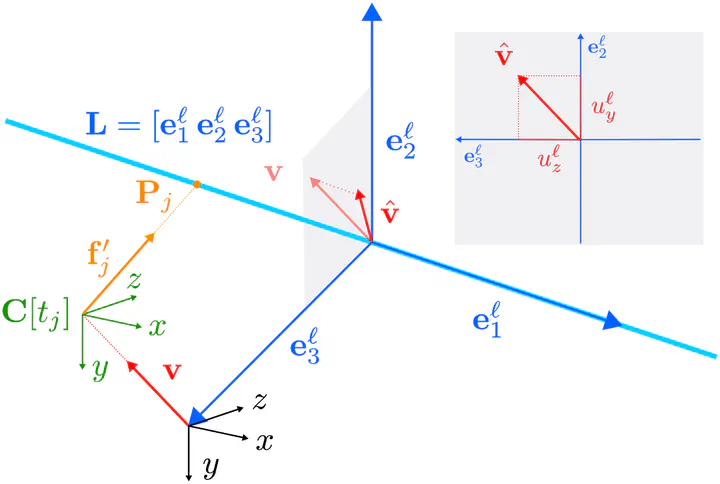An N-Point Linear Solver for Line and Motion Estimation with Event Cameras
Jun 17, 2024·
,
,
,
,
·
1 min read
Ling Gao*
Daniel Gehrig*
Hang Su
Davide Scaramuzza
Laurent Kneip

Abstract
Event cameras respond primarily to edges—formed by strong gradients—and are thus particularly well-suited for line-based motion estimation. Recent work has shown that events generated by a single line each satisfy a polynomial constraint which describes a manifold in the space-time volume. Multiple such constraints can be solved simultaneously to recover the partial linear velocity and line parameters. In this work, we show that, with a suitable line parametrization, this system of constraints is actually linear in the unknowns, which allows us to design a novel linear solver. Unlike existing solvers, our linear solver (i) is fast and numerically stable since it does not rely on expensive root finding, (ii) can solve both minimal and overdetermined systems with more than 5 events (i.e. N ≥ 5), and (iii) admits the characterization of all degenerate cases and multiple solutions. The found line parameters are singularity-free and have a fixed scale, which eliminates the need for auxiliary constraints typically encountered in previous work. To recover the full linear camera velocity we fuse observations from multiple lines with a novel velocity averaging scheme that relies on a geometrically-motivated residual, and thus solves the problem more efficiently than previous schemes which minimize an algebraic residual. Extensive experiments in synthetic and real-world settings demonstrate that our method surpasses the previous work in numerical stability, and operates over 600 times faster.
Type
Publication
IEEE Conference on Computer Vision and Pattern Recognition (CVPR)
This paper lead to an oral at CVPR 2024 in Seattle!